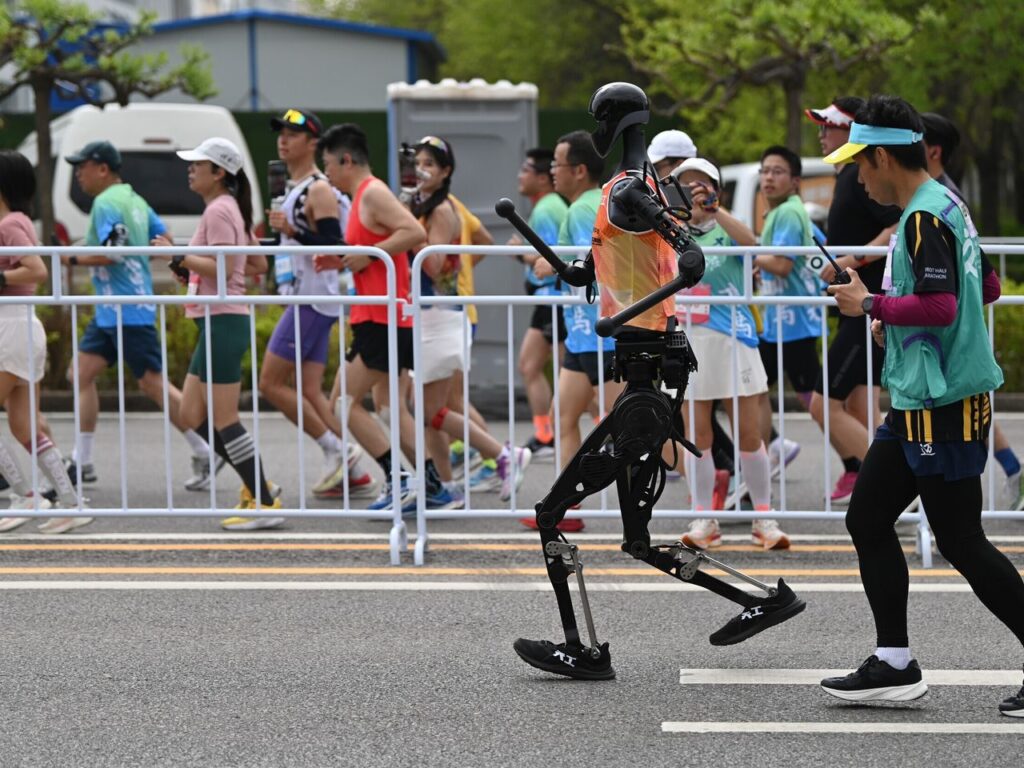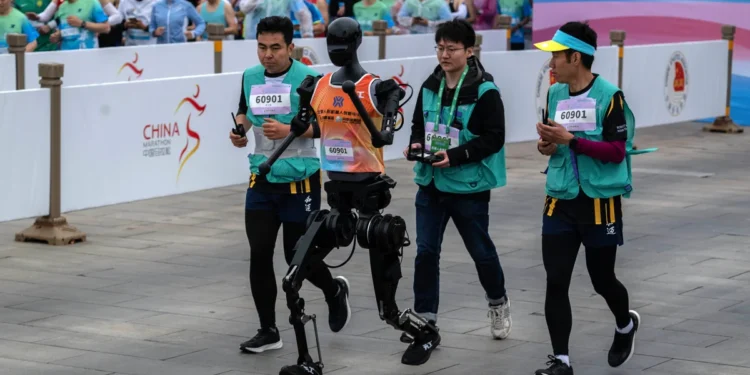For the first time ever, bipedal machines competed in a full 21-kilometre half-marathon alongside human runners in Beijing. The event, part of the Yizhuang half-marathon, and first of its kind, saw 21 robots tested for endurance, balance, and navigation under real-world outdoor conditions.
Outfitted with adaptive gait systems and real-time stability sensors, the robots were monitored closely by engineers collecting data on fatigue, mechanical stress, and performance. Some completed the race with surprising resilience, others didn’t make it past the starting line.
The marathon marks a turning point in the evolution of humanoid robotics and may open the door to their future use in areas like search and rescue, disaster response, and urban mobility.
Organised by a coalition of tech companies and research institutions, the race served as both a public demonstration and a scientific experiment. The robot portion of the marathon featured advanced humanoid models equipped with AI navigation, real-time stability sensors, and adaptive gait algorithms.
“The robots are running very well, very stable… I feel I’m witnessing the evolution of robots and AI,” said He Sishu, a race spectator and AI professional.
Some companies tested their robots for weeks in preparation. According to Beijing officials, the race mirrored Formula 1-style competition, given the need for engineering teams and live support to manage the robots mid-run.

Triumph and Tumbles on the Track
The winner of the robot race was Tiangong Ultra, developed by the Beijing Innovation Center of Human Robotics, clocking in at 2 hours and 40 minutes. While that’s far from the human winner’s time of 1 hour and 2 minutes, the feat was still monumental.
Tang Jian, Chief Technology Officer at the robotics centre, credited Tiangong Ultra’s win to “long legs and an algorithm that mimics how humans run a marathon.”
Not all robots made it smoothly across the finish line. One bot fell at the starting line, lying flat for several minutes before getting back up. Another veered off course into a railing, taking its human handler down with it.
Despite these challenges, most robots displayed remarkable resilience, with some even performing victory gestures at the finish line, drawing cheers from spectators and curiosity from scientists.
Beyond the Race: Real-World Potential
Engineers monitored the robots closely to collect data on fatigue, mechanical stress, and power usage. Organisers say the insights gained are crucial for future search and rescue, disaster response, and urban mobility applications where long-distance bipedal movement is needed.
Although humanoid robots have previously appeared in marathons across China, this is the first instance of them competing alongside humans in a full-length half-marathon.
Still, not everyone sees this as cutting-edge.
“Contrary to claims that such a race requires AI breakthroughs, the software enabling humanoid robots to run was already developed and demonstrated more than five years ago,” said Alan Fern, professor of AI and robotics at Oregon State University.
Even so, the event marks a significant leap in public-facing robotics innovation, and organisers hinted that this could become an annual fixture as the field of humanoid robotics continues to evolve.














